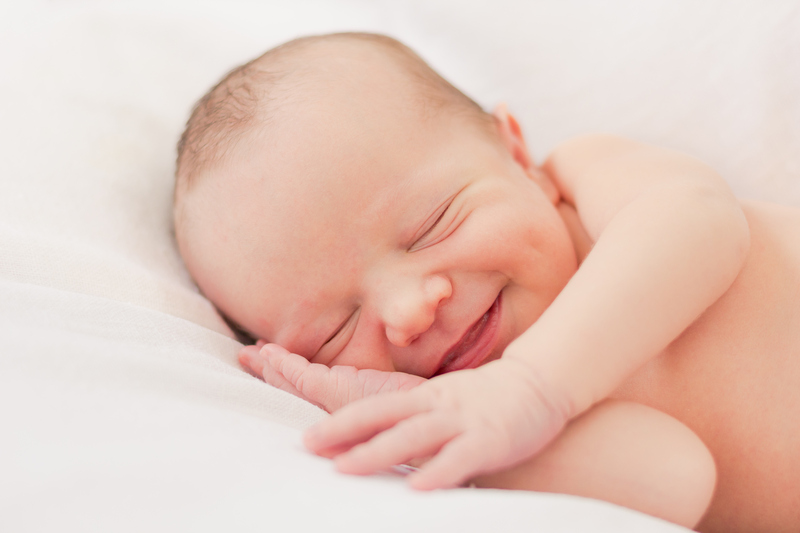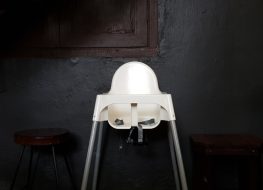
Blankets and pillows are normal items to have in the bedroom. They keep us safe, warm, and comfortable, especially while sleeping. So as new parents, we may see blankets and pillows as beneficial to our newborns because they do us adults good. But the real answer may surprise you.
When can babies sleep with pillows and blankets? The answer is after 12 months, according to the American Academy of Pediatrics (AAP). But if you want to dig further into why you must keep the blankets and pillows away for a while, Ashtonbee lays it out for you in this article.
Risks Associated With Using Blankets and Pillows
Below the 12-month mark, your baby is too young and fragile to introduce pillows and blankets. These items can disrupt your little one’s sleep routine and lead to these bedtime risks.
Sudden Infant Death Syndrome (SIDS)
SIDS happens to babies under 12 months old and is a phenomenon of an unexplained death of a sleeping infant. While SIDS can happen to any infant at any time, and the causes are unknown, there are things that parents can do to minimize the risk of SIDS while their child is sleeping. One of them is to keep their crib free of blankets and pillows.
Suffocation
The risk of suffocation increases when pillows and blankets are in the baby’s crib. This is because sleeping babies can toss and turn while asleep, and if a baby’s head is on a pillow, it can block airways when the baby’s head turns to face the soft pillow.
Blankets can also potentially suffocate your little one. It can cover the baby’s face while they’re sleeping and prevent natural breathing which can lead to suffocation.
Immobility
This risk is often associated with blankets that wrap around your baby during sleep. Immobility is dangerous because it gives your little one a slim chance of turning whenever they get into a tricky position.
For example, it would be difficult for a baby to get out of a prone position when a blanket wraps around them or weighs them down. If their face is buried in a mattress or a pillow and they’re unable to move, it could lead to suffocation.
Overheating
Hyperthermia is a child health risk factor that occurs when the baby sleeps in a warm bedroom, or if they have a persistent fever. A sleeping blanket aggravates these conditions because the use of a sleeping blanket can heat up a baby’s body temperature.
An overheating body may lead to more severe conditions, especially if a child is suffering a viral infection with fever as one of its symptoms. In some cases, a baby’s body overheating may also increase the risk of SIDS.

How To Keep Your Baby Sleeping Safely During Bedtime
We’ve answered the question of when can babies sleep with a pillow and a blanket, and we’ve also established the risks of using them prematurely. But while taking blankets and pillows off the list significantly increases your baby sleeping safely, they can still be subject to the dangers mentioned above. So to further keep your child safe, you can follow these tips.
Let Your Baby Sleep on Their Backs
Always have your baby lying down on their back and straight when they’re sleeping. This is the safest position they can be in as it allows normal breathing and a relaxed body.
It’s best to keep them in this position for their sleep, but this is not easy. If that’s the case, you may try swaddling them with comfortable and loose fabric to keep them steady. As a warning, you must watch them when you decide to swaddle.
Avoid Loose and Soft Bedding
Loose bed sheets can come off the baby’s crib mattress. When that happens, they can play with it or even cover themselves with it!
As much as possible, avoid putting loose bedding on a mattress. You can use a mat or pin the bedding tightly on the baby bed. But the best decision is always to keep the mattress free of covers.
Avoid Laying Them on Very Soft Mattresses
Soft mattresses are like large pillows. They’re soft and comfortable. Great for adults looking for comfort, but terrible for infants.
A soft mattress will make it difficult for your baby to turn and move. So once they’re stuck in a prone position with their face on the mattress, they might find it difficult to get themselves out, and we all know what danger awaits in these scenarios. So always lay them down on a firm mattress if you’re not using a crib.
Get Them a Crib With Fixed Rails
While children below 12 months old may not have the ability to climb or crawl yet, your baby can use the crib beyond the 12-month mark, so you have to choose wisely.
Cribs with adjustable rails are hazardous for babies learning to crawl and climb. They might figure out how to fold down the rails when they’re fiddling around the crib’s corners, and might climb over it.
Clothe Your Baby With Wearable Blankets
In most cases, we use blankets to keep us warm and cozy in cold weather, and your baby also feels the need to be warm just like you. So instead of covering them with a blanket, you can opt for a onesie or other blanket alternatives with a thick cotton fabric to keep your baby warm. That way, the risk of suffocation is unlikely.
Keep a Close Watch on Your Baby
Keep your child’s sleeping area near your room or inside your bedroom to keep them safe. Be mindful and watch your baby when they sleep.
If your little one sleeps during the day, you can use a baby monitor to keep them in view while doing other things. The important thing is to always be on guard for your baby’s sleeping safety.
Recommended Blanket and Pillow for Babies
When your child reaches the 12-month mark and beyond, you can begin to introduce pillows and blankets. For better comfort, safety, and development here are some recommendations on what you should give them.
Head Pillow
A firm pillow for the head will keep your little one comfortable and support the molding of their head shape. Aside from that, head pillows also keep their head steady. You can check out what a head pillow does here.
Cotton Blankets
Start with light, pure cotton blankets. Choosing this type of blanket will help them feel at ease while providing safety. Cotton blankets are light enough for them to pull off if it covers their face or if they get tangled with it.
A Safe and Sound Sleep for Your Baby
Safety and comfort is crucial for babies at any stage. While pillows and blankets do give the sense of comfort and safety, it’s not always applicable.
The right time will come when your little one can enjoy pillows and blankets. But while they’re still young, it’s best to keep these items away from them and use the tips we mentioned above instead to keep them safe, comfy, and happy.
If you’re curious for more baby care tips, check out our blog. You can also check out our collection of baby essentials now.



